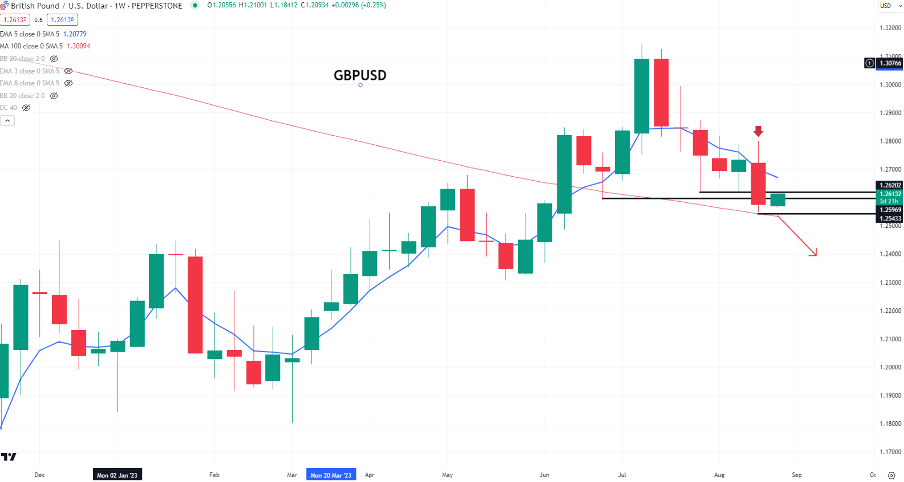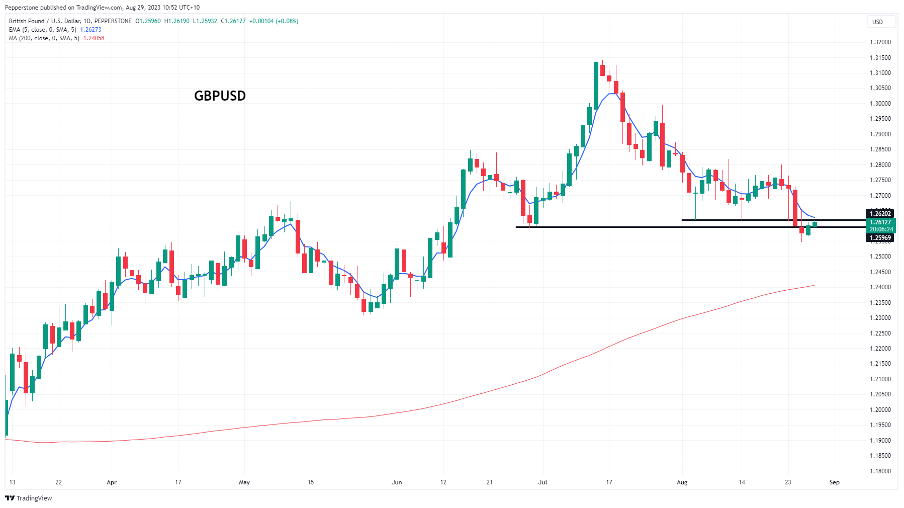Analysis
GBPUSD Weekly Chart

Given the weekly reversal, any potential downside break of last week’s low of 1.2548 is also worth observing, as that could put the 200-day MA at 1.2400 in play. Clearly, the set-up and the flow need to evolve to compel the buyers to stand aside and promote improved trending conditions - Patience will generally always reward a trader.
GBPUSD – daily chart

On the daily chart, we see price stabilizing after the sell-off from 1.2800, with buyers getting a better say. On the higher timeframes, the distribution of outcomes (price) currently seems finely balanced, hence the preference is to adopt a patient stance and wait for the sellers to dominate, as the rate of change (ROC) picks up.
We can also see a head and shoulders pattern on the daily, which, should the neckline break, offers a technical target of 1.2050. Given that GBPUSD 30-day realised volatility (at 6.2%) is the lowest level since April 2022, to get below 1.2100, it may take weeks not days.
Event risks to catalyse GBPUSD shorts
By way of catalysts, there is not much to drive on the GBP side in the short term. We get S&P Global services PMI data on 5 Sept, although this is a revision of recently announced data at 48.7. Unless the services PMI print is revised markedly it shouldn’t move GBP too intently. The next big data point is UK jobs/wage data on 12 September, ahead of the CPI inflation print on 20 September.
The BoE meet on 21 September and at this stage looks certain to hike by a further 25bp.
We can look more closely at the US side and see US nonfarm payrolls and US core PCE inflation this week and the outcome could shape expectations for the November FOMC meeting, where the market currently ascribes a 68% chance of a 25bp hike here.
If the US data comes in hot, then GBPUSD should accelerate lower. Conversely, with the UK service sector showing increased signs of vulnerability, if UK wages and inflation do come in above market expectations then this may prove to be a toxic dynamic for the GBP and actually push GBPUSD lower, as cries for stagflation grow louder. Market expectations for a peak BoE bank rate of 5.89% seem fully priced to me, and I could argue there are downside risks to this pricing.
In conclusion, as we look ahead at near-term USD drivers, rather than get set ahead of these risks, by executing through sell-stop orders below 1.2548, I am aligning with the potential market reaction to these data points. I am also waiting for momentum to build in the market, with the idea that a body in motion stays in motion. Wait for the structure to change and increase the probabilities.
Related articles
The material provided here has not been prepared in accordance with legal requirements designed to promote the independence of investment research and as such is considered to be a marketing communication. Whilst it is not subject to any prohibition on dealing ahead of the dissemination of investment research we will not seek to take any advantage before providing it to our clients.
Pepperstone doesn’t represent that the material provided here is accurate, current or complete, and therefore shouldn’t be relied upon as such. The information, whether from a third party or not, isn’t to be considered as a recommendation; or an offer to buy or sell; or the solicitation of an offer to buy or sell any security, financial product or instrument; or to participate in any particular trading strategy. It does not take into account readers’ financial situation or investment objectives. We advise any readers of this content to seek their own advice. Without the approval of Pepperstone, reproduction or redistribution of this information isn’t permitted.

_(1).jpg?height=420?quality=30)
.jpg?height=420?quality=30)
.jpg?height=420?quality=30)
_(1).jpg?height=420?quality=30)